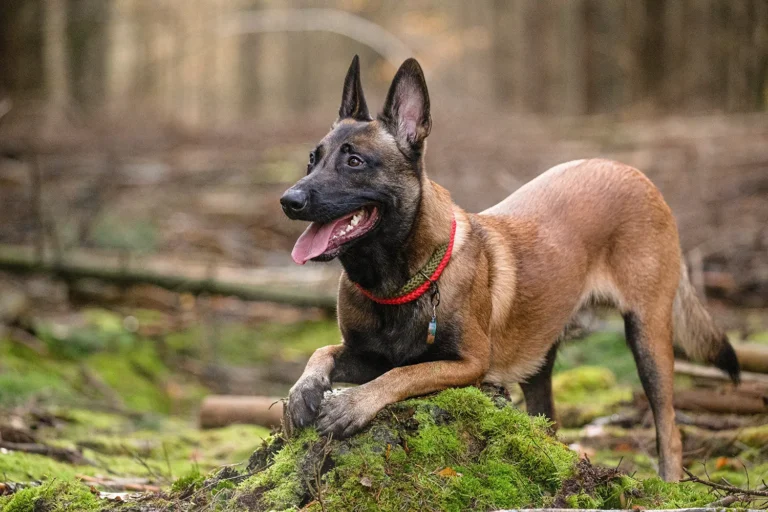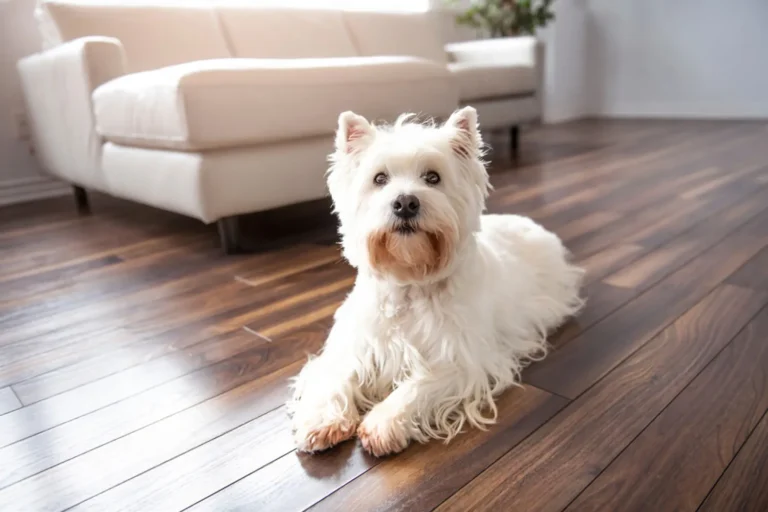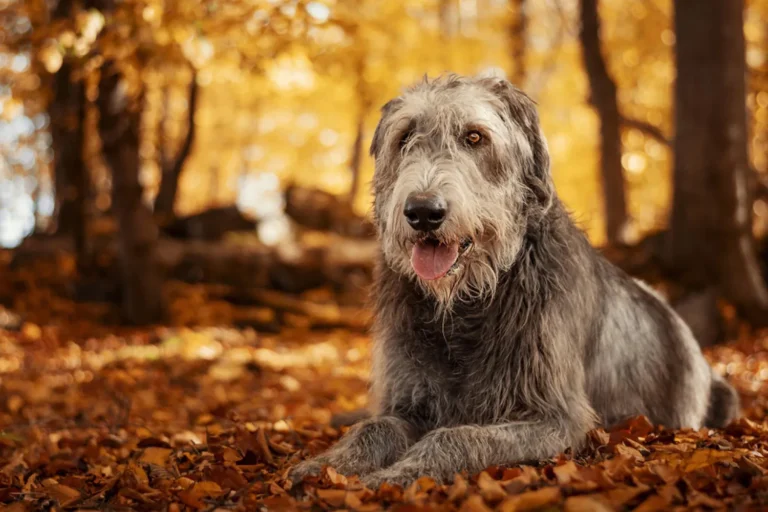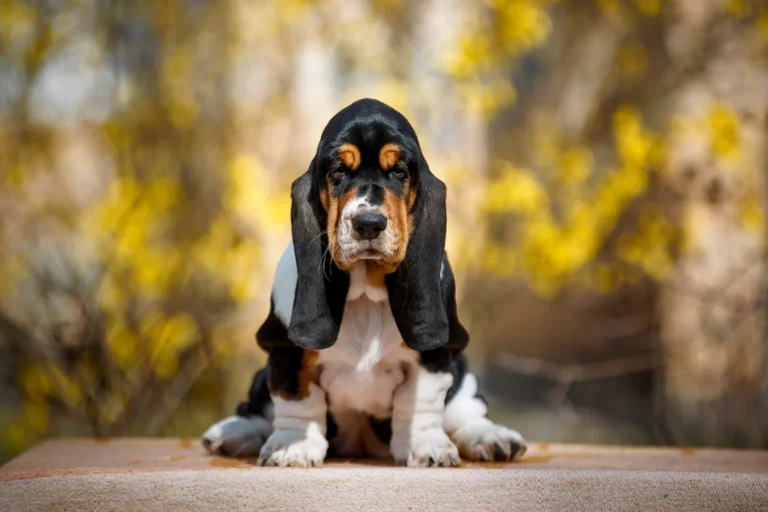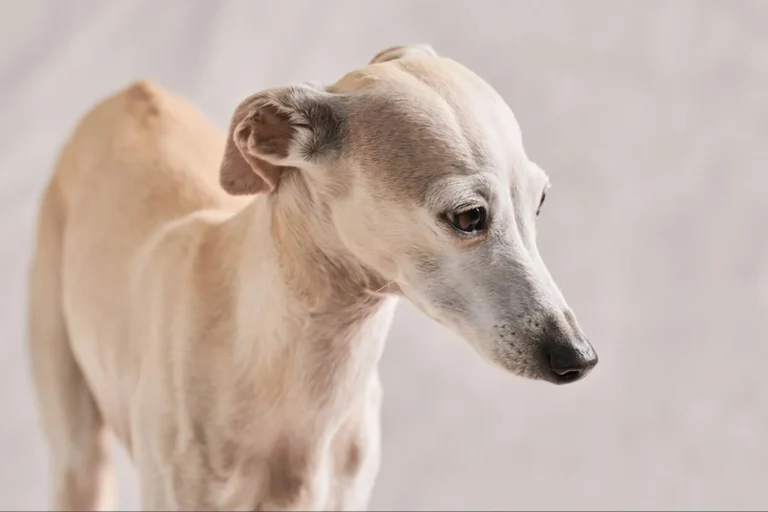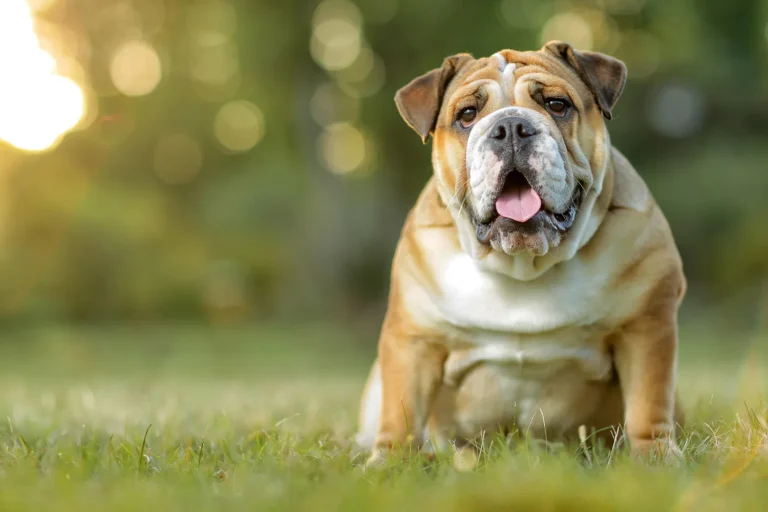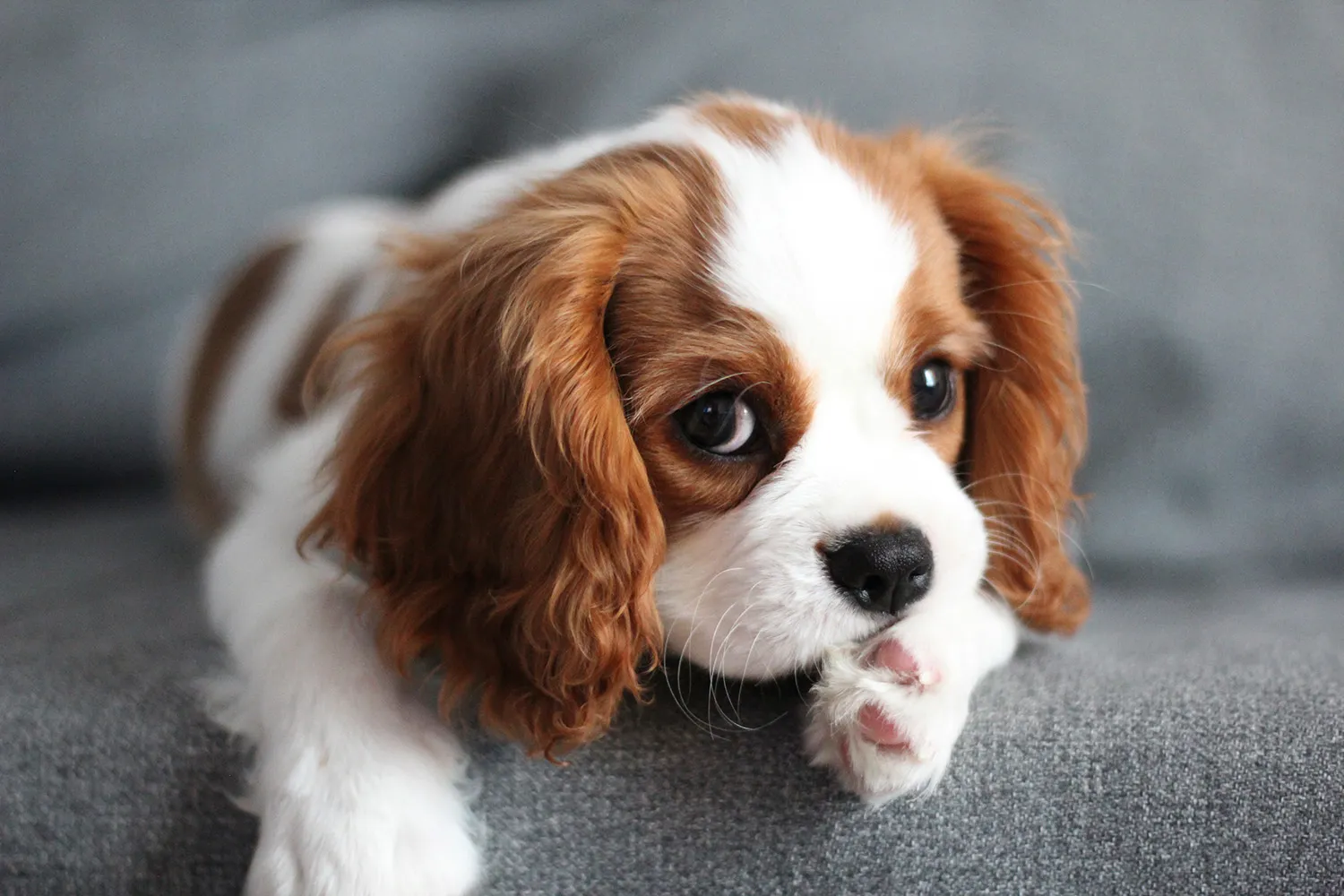
Choosing a dog breed for your family is exciting, but it’s a big decision. Think about your everyday life first: how much you’re home, how active you are, and how much grooming you can handle. I once fell in love with a high energy herding breed, but after a week of “practice” walks and a reality check about my small yard and long work hours, I realized a calmer, mixed breed pup was a better fit and we’ve been perfectly matched ever since.
Be honest about your time, budget, and patience for training. Meet dogs in person, chat with breeders or rescue volunteers, and ask about energy levels, kid friendliness, and any quirks. My friend took a shelter dog on a trial weekend hike and learned he preferred puzzles to mountains problem solved. Consider allergies, shedding, and vet costs, and plan for the next decade, not just the next month. The right dog will fit your life like a comfy pair of shoes: supportive, joyful, and ready for all your everyday adventures.
What is the history and origin of the Cavalier King Charles Spaniel?
Picture little toy spaniels padding through royal halls, settling onto velvet cushions by a crackling fire that’s where the Cavalier’s story begins. They descend from the small spaniels adored by European nobility, and none more famously than King Charles II, who doted on them during his reign from 1660 to 1685. I remember standing in front of an old portrait at a museum and smiling at a tiny spaniel perched at a duchess’s feet; it felt like meeting a Cavalier’s great great great granddog.
By the early 18th century, these charming little companions swung back into fashion and even tagged along on hunts. Don’t let their silky ears fool you they were nimble enough to flush small game and then hop right back into a lap once the work was done. A friend’s Cavalier once spent an afternoon happily trotting through fields after butterflies, and then fell asleep snoring on the car ride home like a seasoned aristocrat who’d done a hard day’s work.
Modern Cavaliers took shape much later. The first official club dedicated to the breed began in 1928, laying down a shared standard for the look and temperament people loved. Decades later, in 1995, the breed earned recognition from the American Kennel Club, and I remember local shows suddenly filling with these merry, feather tailed charmers. If you’re looking into the breed today, a little advice: chat with breeders who care about preserving not just the Cavalier’s elegant appearance, but also that gentle, people focused nature that won over kings and commoners alike.
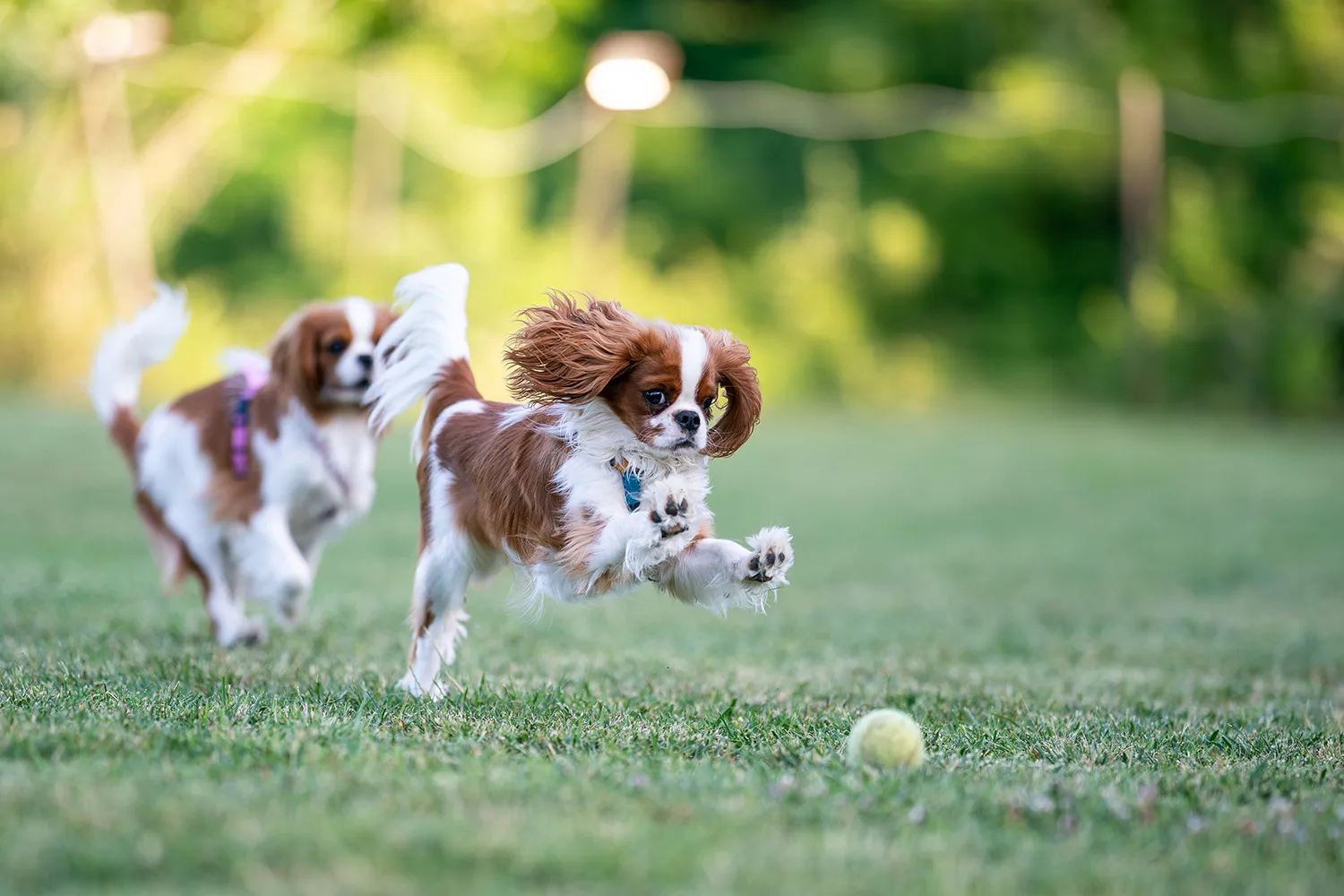
What Is a Cavalier King Charles Spaniel?
If you’ve ever been ambushed by a pair of big, melting eyes and a feather dusted tail, you’ve probably met a Cavalier King Charles Spaniel. Cavaliers are small, affectionate, and famously gentle one of those non aggressive, friend to everyone breeds that make you feel like you’ve known them forever. They’re classed in the Toy Group by both the American Kennel Club and The Kennel Club, but don’t let “toy” fool you; they’ve got real dog spirit in a compact, cuddle friendly package.
Their coats are a major part of the charm: medium length, silky, and sometimes a little wavy, especially around the ears and chest. Cavaliers come in four classic colors black and tan, ruby, tricolour, and Blenheim (that chestnut and white combo you see in so many storybooks). I once tried to fold laundry with a tricolour Cavalier “helping.” He carefully unfolded each towel to make himself a nest. That’s the Cavalier way: turn ordinary moments into cozy ones.
Living with a Cavalier feels like wearing a warm sweater with a heartbeat. They thrive on closeness and do best in homes where someone is around most of the day. A couple of short walks, a little fetch in the hallway, then straight back to your lap that’s their ideal routine. They’re eager to please and respond beautifully to gentle, positive training, which makes them great for first time dog owners or families with kids who know how to be kind.
Grooming is pleasantly simple. I give mine a quick brush a few times a week to keep that silky coat smooth and to prevent ear and feathering tangles. A monthly bath, regular nail trims, and a check under those lovely ears keep them looking fresh. Pro tip: keep a soft cloth by the door; a quick wipe after walks works wonders for those fringed paws.
In a nutshell, the Cavalier King Charles Spaniel is a sweet, lap ready companion with a velvety coat and a love for everyone attitude whether dressed in ruby, Blenheim, tricolour, or black and tan. If your idea of a perfect day involves a warm cup of tea and a warm dog under your arm, this little royal might be your perfect match.
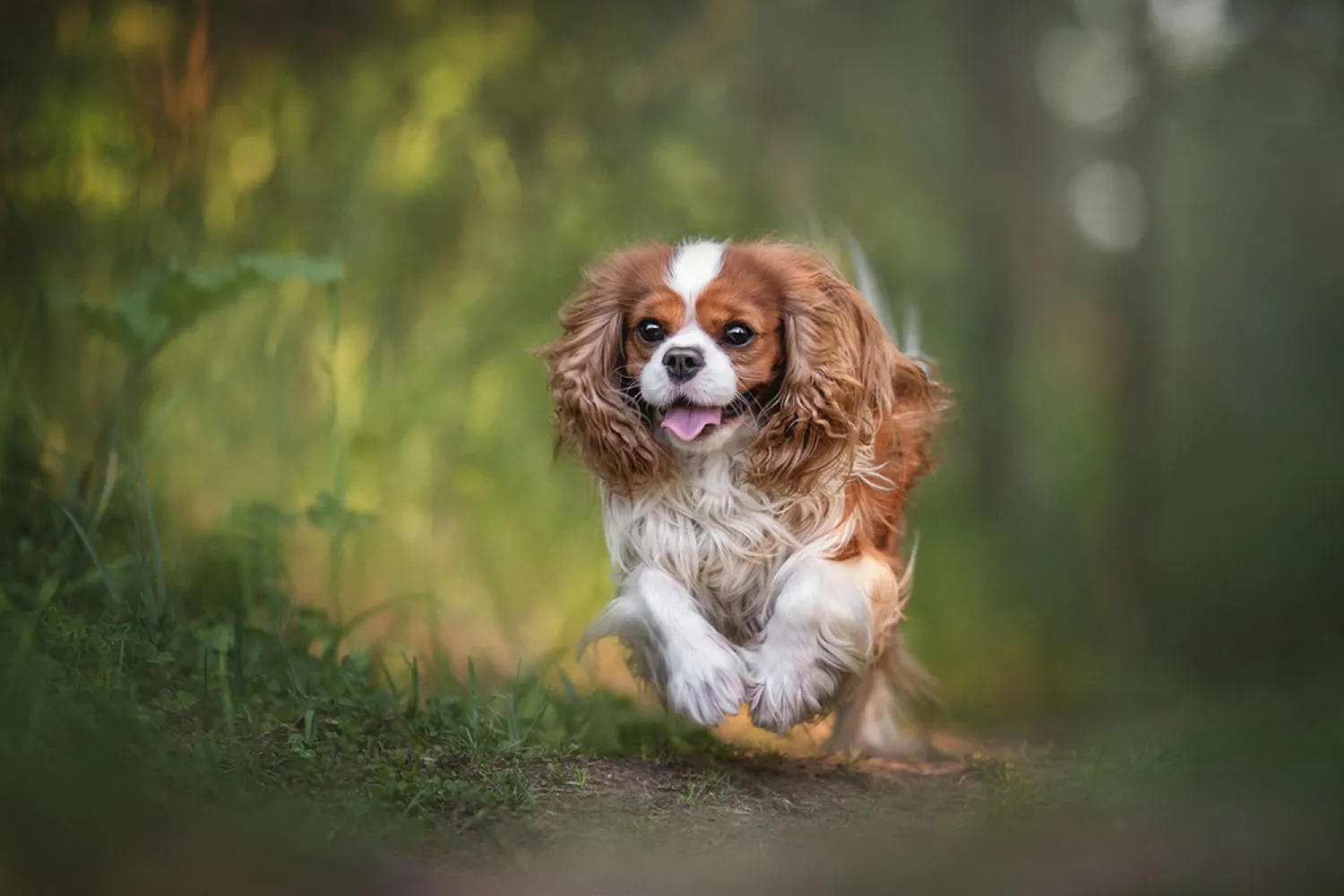
Who Is a Cavalier King Charles Spaniel Best For?
This toy spaniel is a small, affectionate companion who fits beautifully into family life and brings a lot of comfort to older folks, too. They’re easygoing housemates happy in an apartment or a cozy home and they tend to be gentle with kids when play is supervised. I remember visiting my aunt’s Cavalier, Poppy, who would curl up on her lap during afternoon tea and then shuffle over to nuzzle the grandkids. It’s that soft, social nature that makes them such heart stealers.
Cavaliers form strong bonds and really do best with people who are around most of the day. They can be prone to separation anxiety, so work from home folks or retirees are often an ideal match. When I dogsat a Cavalier named Alfie, he followed me from room to room and settled by my feet during video calls like it was his job. If your schedule means you’re out a lot, think about doggy daycare, a trusted dog walker, or arranging midday visits. Start alone time training early short practice departures, a comfy crate or pen, and safe chew toys can make a big difference.
Exercise wise, they don’t need loads around 40 minutes daily is usually enough. Two gentle strolls and a little playtime in the living room will keep them content. They’re not built for big hikes or long, rugged adventures, but they adore “sniffaris” in the park and then a long cuddle on the couch. If your ideal weekend is a cozy coffee, a short walk, and a nap with a warm, fluffy shadow by your side, a Cavalier might be your perfect match.
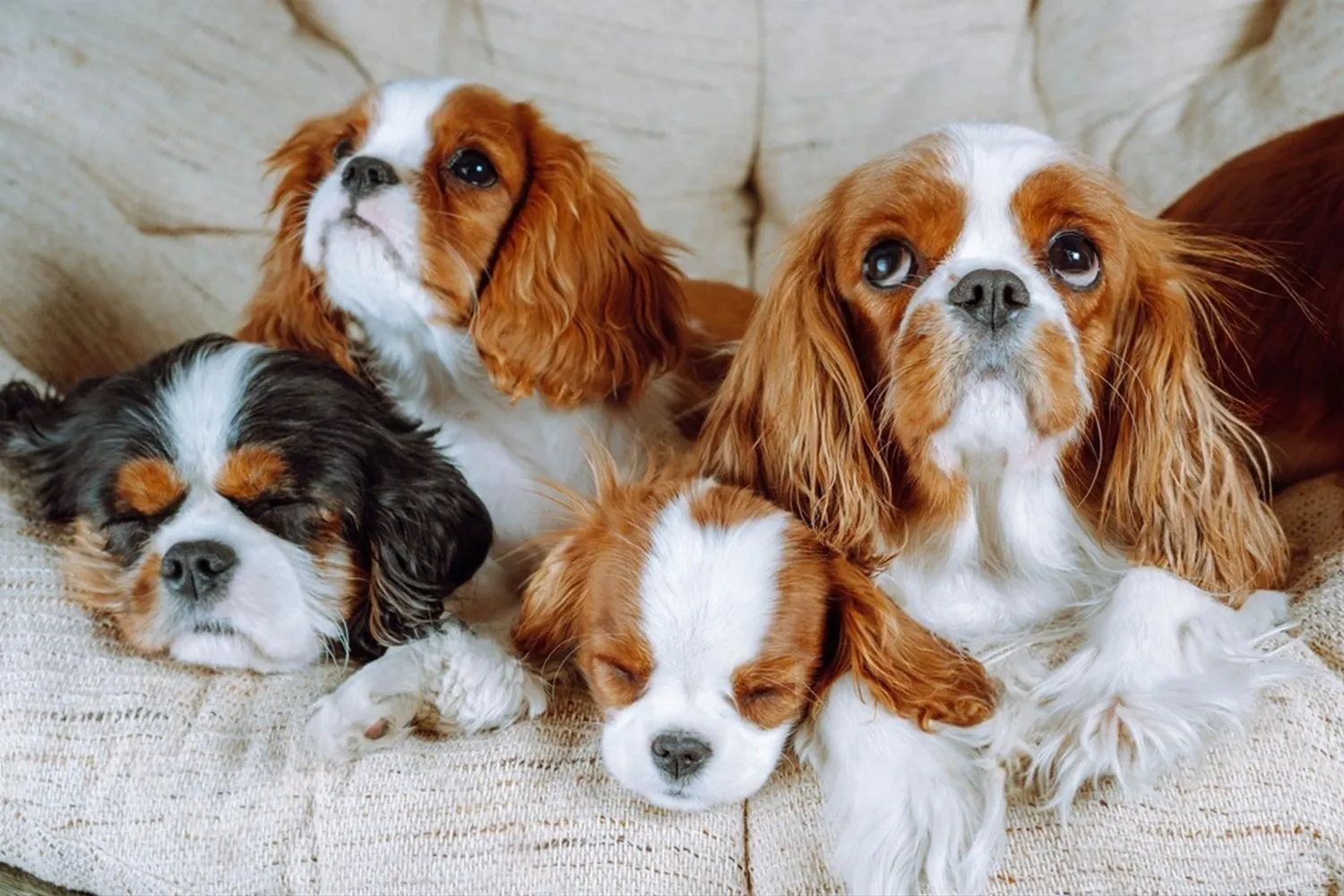
Cavalier King Charles Spaniel Grooming & Shedding
Cavaliers are little clouds of silk, and keeping that coat soft and tangle free is all about steady, gentle care. Bathing can be as often as once a week and no less than once every six weeks, depending on how adventurous your pup is. After a muddy romp, I’ll draw a warm bath, use a mild dog shampoo, and rinse until the water runs clear rinsing well keeps that shine. A quick towel dry followed by a few minutes with a blow dryer on a cool setting gets the ears and feathering dry so they don’t stay damp.
The real magic is in the daily brushing. Ten minutes with a medium bristle brush does wonders to spread natural oils and keep the coat smooth. I like to mist the coat lightly with water first; it helps catch loose hairs and makes the brush glide. Start at the ends of the feathering and work your way toward the skin, especially on the underbelly, tail, ears, chest, and legs those spots love to hide little knots. I hold sections of hair gently near the skin as I brush to avoid tugging. A breeder I met in Virginia swore by this mantra: “Ten minutes a day keeps the mats away.” She wasn’t wrong. I even keep a small comb handy to check behind the ears and under the collar after brushing.
Cavaliers shed year round, so think “manage,” not “eliminate.” Daily brushing keeps most of the loose hair on your brush instead of your sofa. I toss a washable blanket over my dog’s favorite nap spot and do a quick lint roller pass on my black jeans before heading out learned that one the hard way. During heavier shedding spurts, I up the brushing to a couple of quick sessions: one after breakfast, one in the evening while we watch TV. It becomes a cuddle routine more than a chore.
A few extra touches go a long way: check and gently wipe the ears weekly, keep the fur between paw pads tidy so debris doesn’t mat, and do a quick “sanitary” tidy if needed. Treats, a calm voice, and a short, consistent routine make Cavaliers think grooming time is just more time with you and that’s their favorite thing ever.
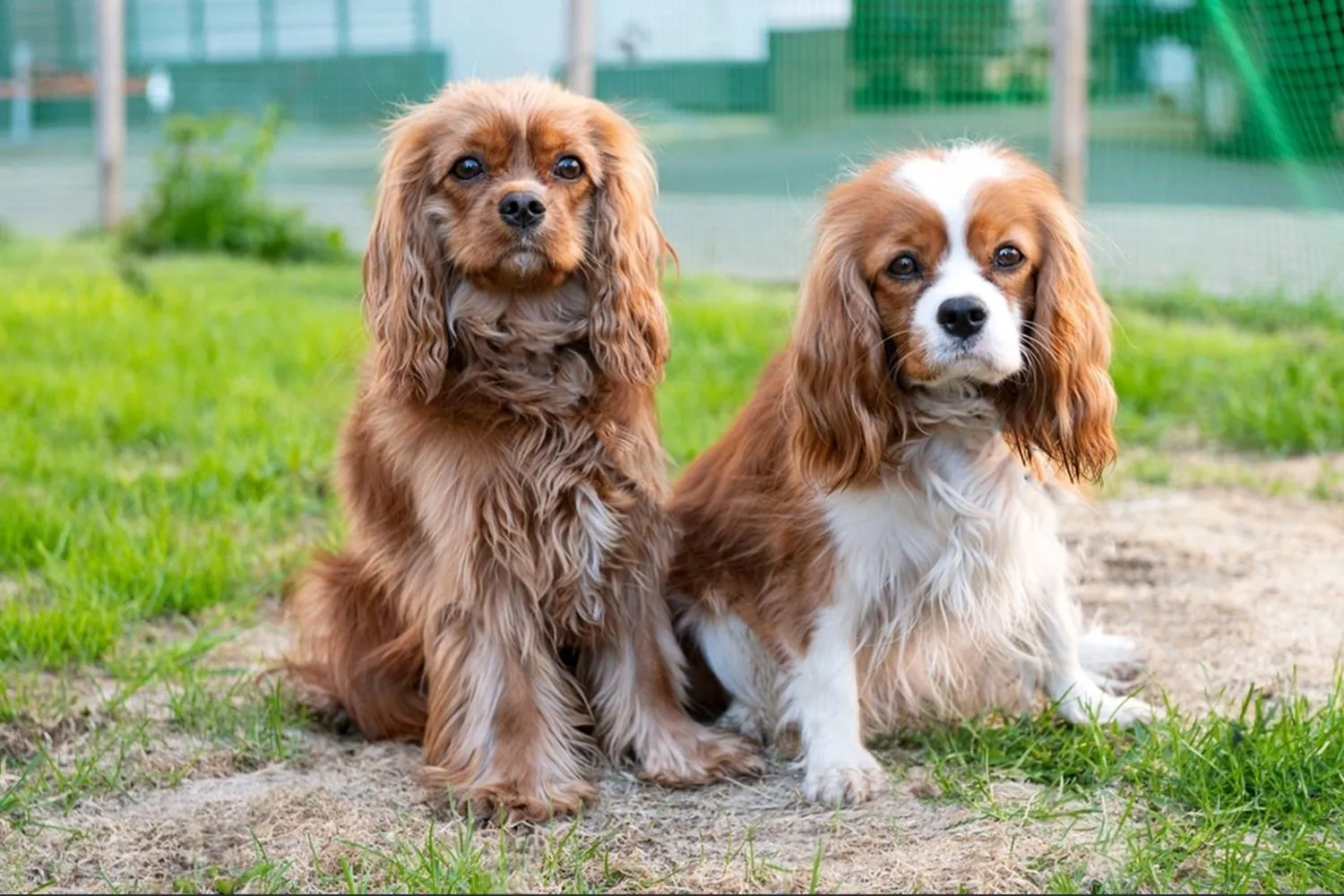
Do Cavalier King Charles Spaniels Bark a Lot?
Thanks to their sweet, laid back nature, Cavaliers aren’t big barkers. Most of the time they’re happiest glued to your side or snoozing on the couch, not patrolling the windows looking for trouble. Mine will give a polite “woof” if the doorbell rings or a squirrel makes eye contact, and then he’s back to napping like nothing happened. A neighbor once told me she forgets I even have a dog because she never hears him high praise for apartment life!
That said, every dog has a voice, and Cavaliers might use theirs to say hello or alert you once or twice. They’re companion dogs through and through, so if they’re left alone too long, some may get chatty from boredom or loneliness. A little routine goes a long way: a decent walk, a sniffy potty break, and a bit of brain work (think food puzzles or a stuffed Kong) keeps the volume knob turned down. I also taught a simple “thank you” cue acknowledge the first bark, then reward quiet. It’s amazing how quickly they catch on.
If you’re in an apartment, you’ll likely appreciate how considerate this breed is. Still, set them up for success: close the blinds if street noise sets them off, play soft music when you’re out, and practice short, positive alone time so they don’t worry. Cavaliers aren’t known for frequent barking, but with a little training and attention, they’re the kind of neighbor everyone wishes they had.
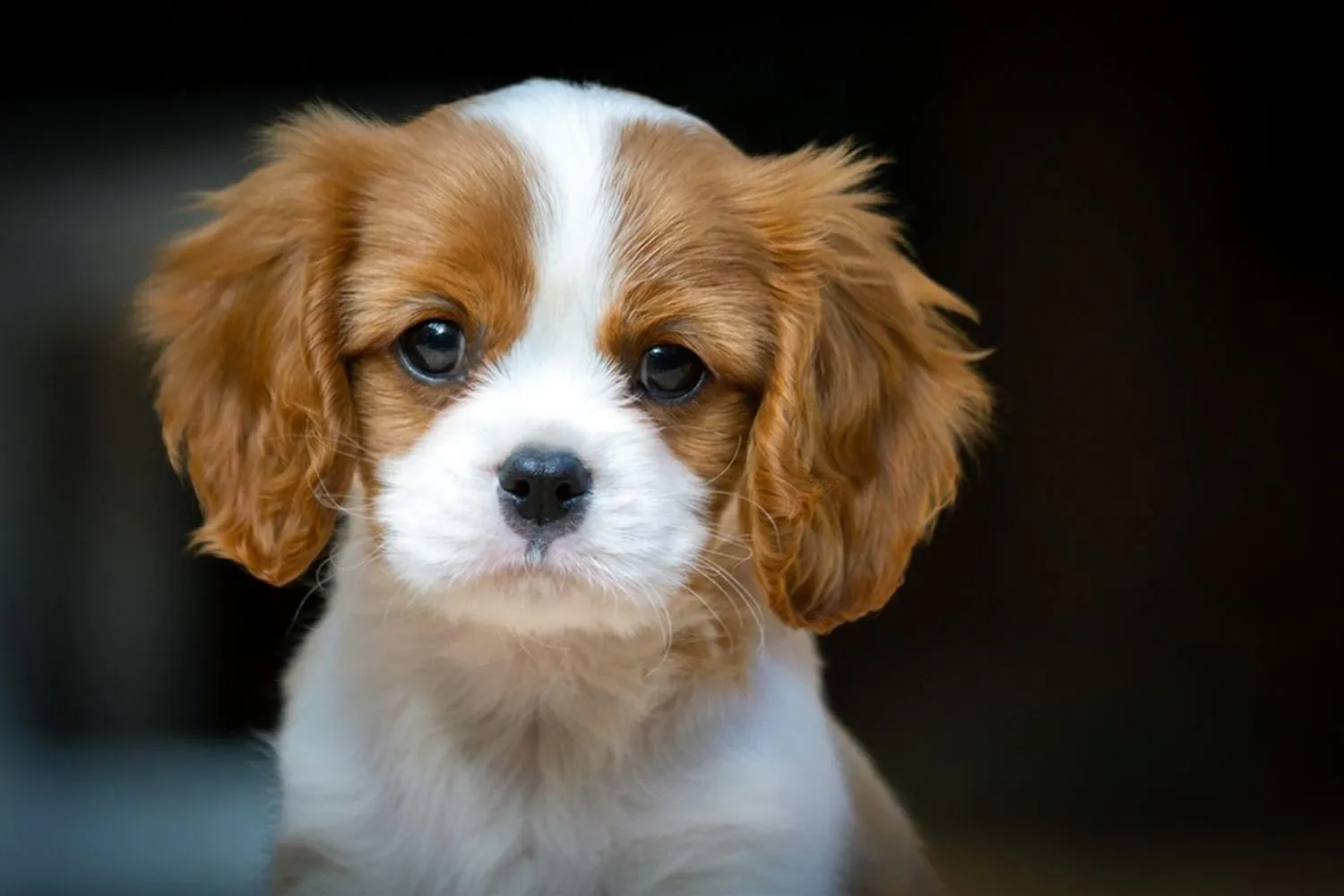
What is the average weight and height of a Cavalier King Charles Spaniel?
Cavaliers are small but sturdy little companions. Most adults stand about 30-33 cm at the shoulder (around 12-13 inches) and weigh between 5.5 and 8 kg (roughly 12-17.5 lb). My boy settled right in the middle at 32 cm and 7 kg light enough to scoop up for couch cuddles, solid enough to keep up on a brisk walk. https://en.wikipedia.org/wiki/Cavalier_King_Charles_Spaniel
Wondering if yours is on track? You should feel ribs without digging and see a gentle waist from above. Cavaliers’ silky coats can hide a few sneaky kilos, so I do a quick monthly weigh in and keep treats honest. Puppies shoot up first, then fill out; by about a year, most are near adult size.
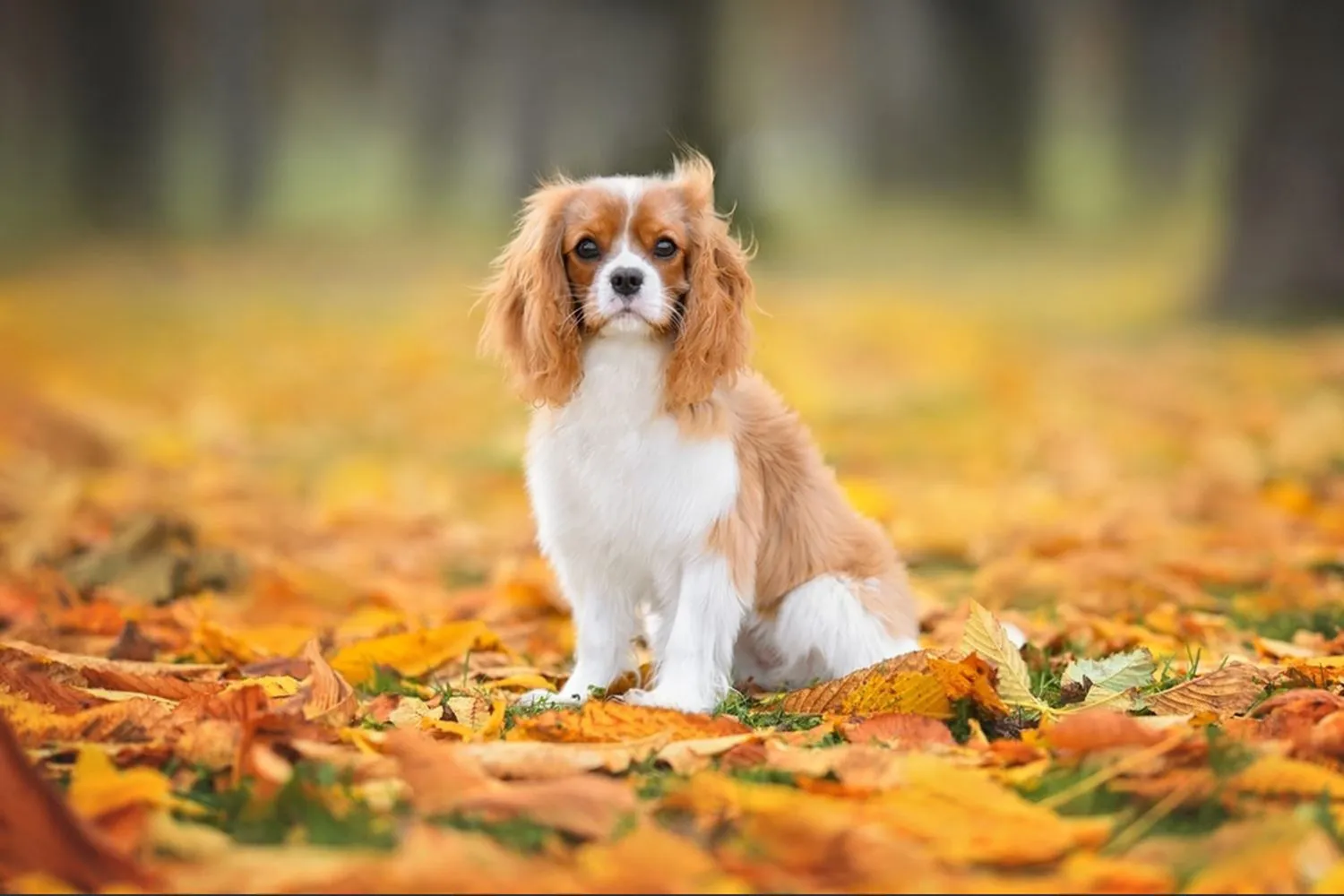
Are Cavalier King Charles Spaniels easy to train?
In my experience, yes Cavaliers are little crowd pleasers who genuinely want to get it right. They respond beautifully to positive reinforcement, especially tiny, tasty treats and an enthusiastic “good job!” My first Cavalier learned sit, down, and a sweet little paw shake in a weekend because we kept sessions short, fun, and full of praise. They’re sensitive souls, so skip harsh corrections and keep your tone cheerful. A handful of five minute sessions sprinkled through the day works far better than one long lesson, and you can mix in toys or a quick game to keep them engaged.
House training can take a bit more patience, though. What helped me most was a predictable routine: out first thing in the morning, after meals, after play, and before bed plus any time my pup started circling or sniffing like a truffle pig. Pick a potty spot, add a cue like “go potty,” and reward immediately after they finish outside so the message is crystal clear. If there’s an accident, don’t scold; just clean up with an enzyme cleaner and try to catch the next opportunity. A crate or playpen can be a big help with timing and preventing mishaps. And one last tip: Cavaliers love food, so use teeny treats to protect their waistline while you’re racking up those wins.
How Do Cavalier King Charles Spaniels Behave? A Look at Their Temperament and Personality
Cavaliers are classic “velcro” dogs sweet, people focused, and happiest when they’re tucked up against you on the couch or trotting faithfully from room to room. Most are social butterflies, gentle with kids and downright welcoming to strangers. I once met a Cavalier named Poppy at a busy street café who wagged at every stroller that went by and collected more pats than the barista got tips. As with any breed, teach children to be calm and respectful, and you’ll usually see that famously soft, steady temperament shine.
That said, personalities do vary. I’ve met Cavaliers who are mellow TV buddies and others who are goofy fetch fanatics. A breeder I spoke with in Virginia joked she can spot the “lap lovers” and the “park pals” by week six. They’re sensitive souls, so positive, gentle training works best. Most get along with other pets, though their spaniel roots mean they might chase birds or squirrels keep that recall sharp. They don’t love long alone time, so plan for companionship, a dog walker, or puzzle toys. Match their energy to your lifestyle, and you’ll have a devoted, velvet eared friend who slides right into family life.
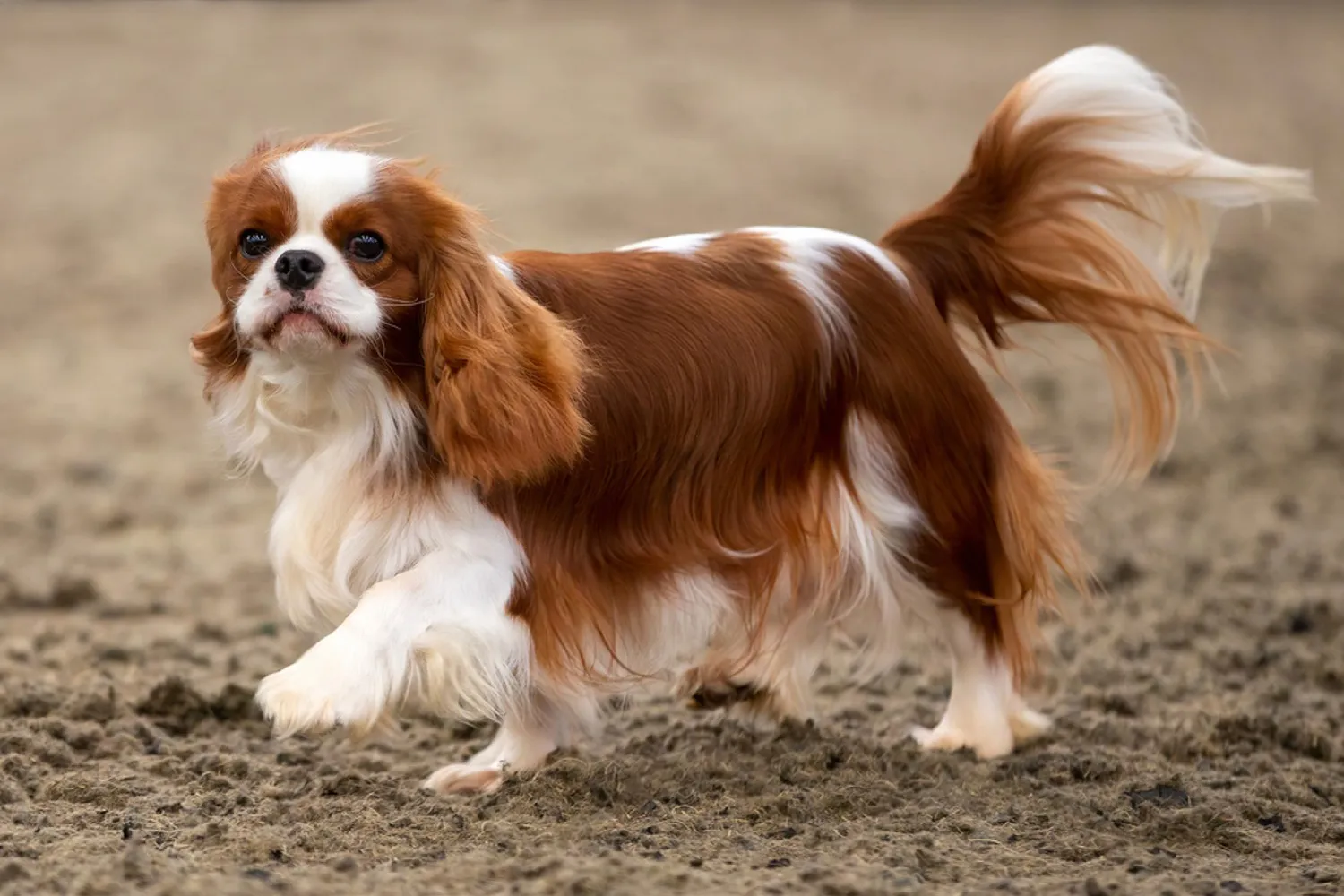
Do Cavalier King Charles Spaniels Have Common Health Issues?
Cavalier King Charles Spaniels are generally sturdy little companions, but like every breed, they have a few health quirks that pop up more often than we’d like. Knowing what to watch for doesn’t make them any less wonderful it just helps you care for them with confidence. I always say that loving a Cavalier means learning their “playlist” of common concerns and staying one step ahead with good breeders, regular vet visits, and a watchful eye at home.
The big one you’ll hear about is Mitral Valve Disease (MVD). It affects the heart valves and usually shows up first as a soft heart murmur that can worsen over time. It’s inherited, which is why responsible breeders have their dogs’ hearts checked regularly ideally by a cardiologist. My neighbor’s Cavalier was picked up with a faint murmur during a routine exam at age five; with early medication and monitoring, he still trotted happily around the block years later. Keep an ear out for coughing, tiring on walks, or fainting spells, and schedule those annual checkups your vet’s stethoscope is your best early warning system.
Episodic Falling is another Cavalier specific issue that can look like a seizure, but the dog stays conscious. It’s caused by muscles that can’t relax properly, so during an episode the body may stiffen and topple. It can be scary the first time you see it. If it happens, I sit nearby, keep things calm and quiet, and time the episode so I can report back to my vet. Heat, excitement, or intense play can be triggers, so pacing activities and giving gentle cooldowns after zoomies can help. Some breeders use genetic testing to reduce the risk in their lines worth asking about if you’re researching puppies.
Syringomyelia (SM) is a more serious condition linked to a skull shape that crowds the brain, causing fluid filled cavities in the spinal cord. Dogs may show sensitivity around the head and neck, yelp when touched, or do that odd “air scratching” near the ear without actually making contact. If you’ve ever seen it, you don’t forget it. A vet visit is essential if you spot these signs. One small thing that can help with comfort switch to a harness instead of a neck collar; my own rule is harnesses for every Cavalier, all the time. Breeders who screen breeding dogs with MRI and work with specialists are doing the breed a great service.
Patellar Luxation is a fancy way of saying the kneecap slips out of place. Some dogs do a little hop skip and then carry on like nothing happened; others show pain and need more help. Mild cases can often be managed with pain control and muscle strengthening advice from your vet, while severe cases may need surgery. I keep Cavalier nails short for better traction and add rugs over slick floors tiny changes that make a big difference on wobbly days.
Hip Dysplasia can crop up too, where the socket and femur don’t fit together quite right. You might notice stiffness after naps, bunny hopping, or reluctance to jump on the couch (which, let’s be honest, they consider their throne). Weight management is huge here keeping a Cavalier lean is one of the kindest health gifts you can give. Your vet can guide you on supplements, low impact exercise like swimming, and, in some cases, surgical options that restore comfort.
Keratoconjunctivitis Sicca (Dry Eye) is exactly what it sounds like: the tear glands don’t produce enough tears, which can damage the surface of the eye and even threaten vision if untreated. The first thing I notice is goopy discharge that keeps coming back. Daily, vet prescribed eye drops can work wonders, and Cavaliers tend to be surprisingly tolerant of a gentle eye care routine when you pair it with treats and a soothing voice.
If you’re bringing a Cavalier into your life, ask breeders for health clearances: cardiac exams by a cardiologist, eye exams by a veterinary ophthalmologist, and evaluations for hips and patellas. Some also test for episodic falling. And for those of us already in the club, a few habits go a long way: yearly vet visits (twice yearly for seniors), a healthy weight, harness walks, and prompt attention to any new coughs, odd scratching, or limping. Cavaliers give us so much love; a little extra diligence helps keep their hearts happy and their tails in full wag mode.
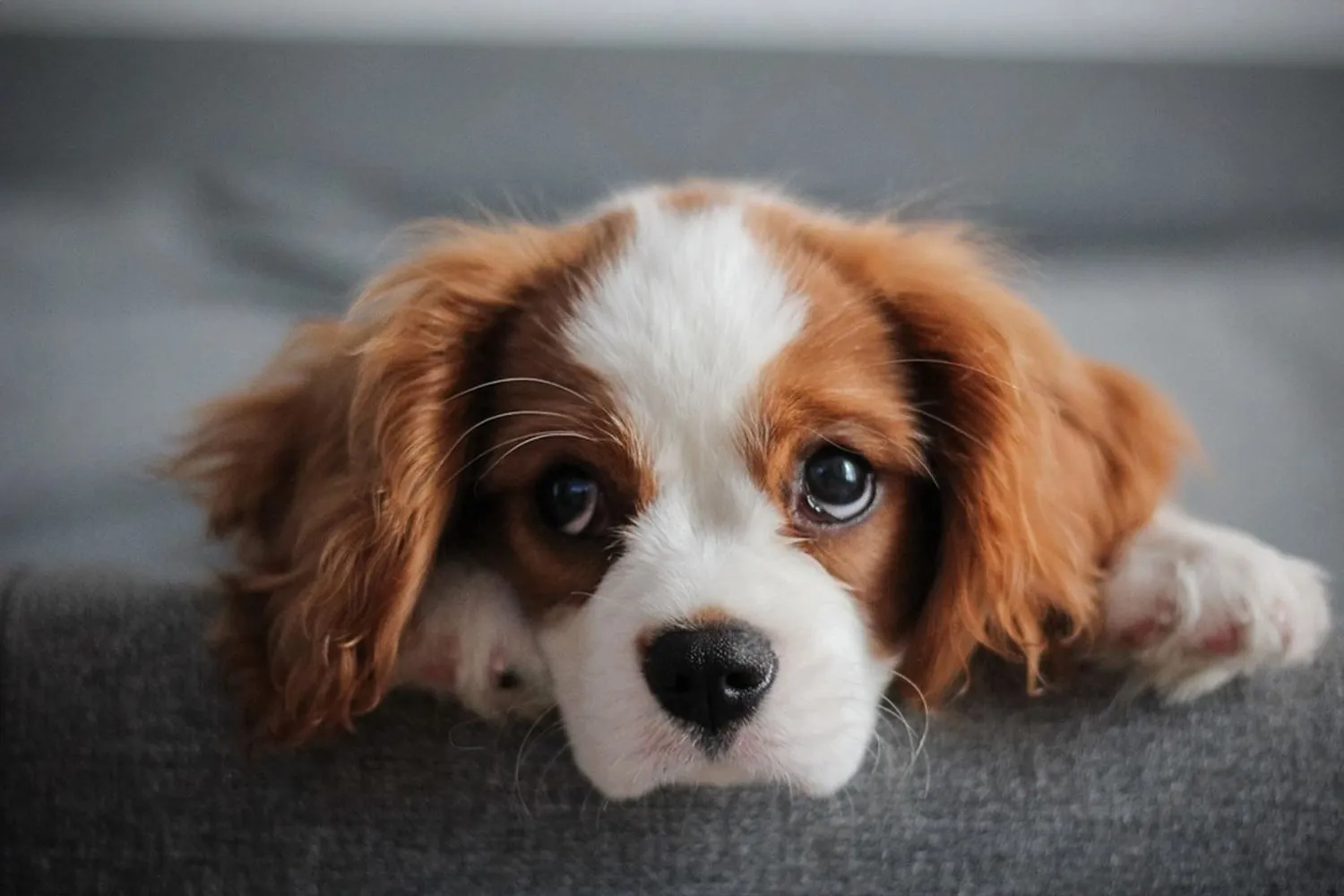
What Is the Lifespan of a Cavalier King Charles Spaniel?
Most Cavaliers live between 9 and 14 years, and where they land in that range often comes down to a mix of bloodline, diet, and day to day lifestyle. I’ve known a few who breezed into their mid teens with bright eyes and a love for couch snuggles, and I’ve also seen others slow down a bit earlier every pup has their own story.
If you’re hoping to give your Cavalier the best shot at a long, happy life, start with good breeding or a rescue that shares health info. Bloodline matters because Cavaliers can be prone to certain issues, so look for breeders who screen parents and be proactive with vet checkups, especially heart and dental care. Keep meals measured and treats reasonable lean dogs live longer and aim for gentle, consistent exercise like easy walks and fun sniffing sessions. I used to do short morning strolls and a relaxed evening loop; it kept energy steady without overdoing it. Add in mental enrichment (snuffle mats are a hit), regular grooming, and lots of companionship. Cavaliers thrive on being with their people, and honestly, that daily dose of love and routine goes a long way.
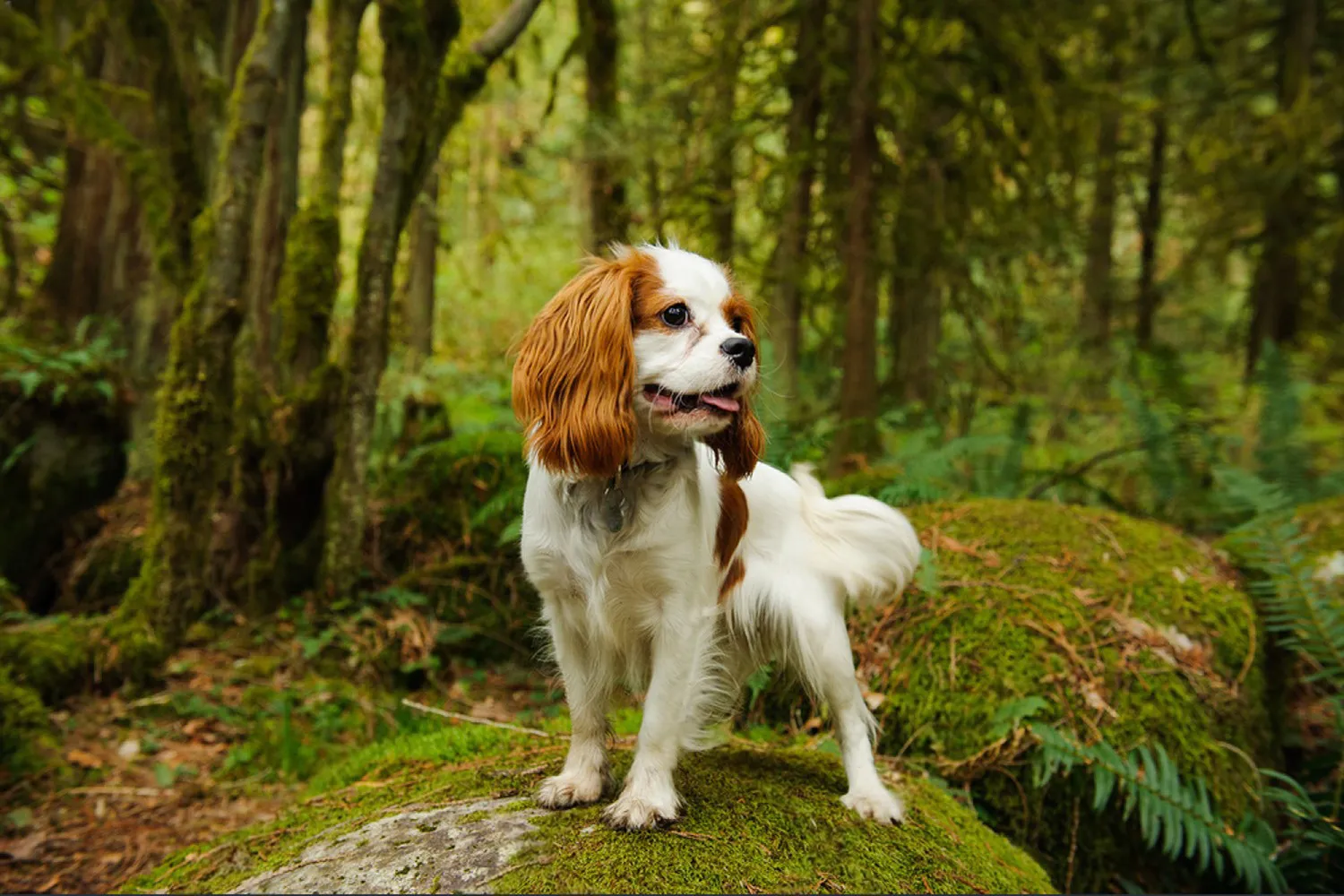
How Much Should You Feed a Cavalier King Charles Spaniel?
For most Cavaliers, a good daily target is between 1/2 cup and 1 cup of quality dry food total, split into two meals. Breakfast and dinner keep their energy steady and help prevent begging and tummy troubles. I like to start around 3/4 cup per day and then adjust within that range based on how my dog looks and feels.
Quality matters as much as quantity. Choose a complete and balanced dog food that has all the nutrients a Cavalier needs for healthy development. Look for life stage appropriate formulas (puppy for growing pups, adult for grown dogs) and a solid ingredient list with good protein sources. If you mix in a little wet food or toppers, just reduce the kibble so the total still lands in that 1/2 to 1 cup window.
Cavaliers are pros at the “sad eyes” routine, so be mindful with treats. I keep treats to about 10% of the day’s calories and count chews and dental sticks, too. A quick body check helps: you should be able to feel ribs with light pressure and see a slight waist from above. If my Cavalier starts looking a bit round, I trim back the portion by a tablespoon or two for a week. On hiking weeks, I’ll bump it up still staying within that range.
A couple of practical tips from my kitchen: use an actual measuring cup (not a coffee mug), keep fresh water down all day, and consider a slow feeder bowl if your Cavalier inhales meals. And if you switch foods, transition slowly over 5-7 days to keep their stomach happy. My friend once rushed a switch and spent a weekend cleaning up lesson learned!
Every dog is unique, but with two measured meals, a complete and balanced food, and small tweaks based on body condition, your Cavalier will stay satisfied, shiny, and in great shape.
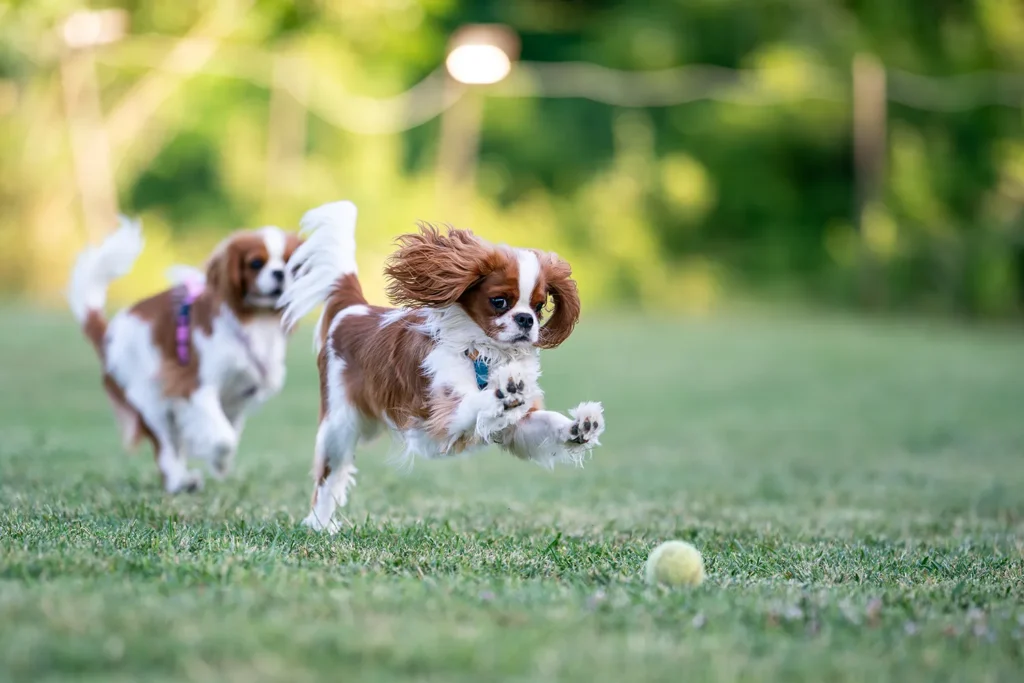
Cavalier King Charles Spaniel FAQs
Is a Cavalier King Charles Spaniel ideal for a first time dog owner?
Absolutely. Cavaliers are one of those breeds that make you feel like you’ve been doing this dog parent thing forever, even on day one. Their sweet nature, small size, and eagerness to please make training feel more like a conversation than a battle of wills. I’ve had great success with short, fun training sessions think five minutes with treats and praise and a basic puppy class to get the hang of cues and leash manners. They’re gentle and generally adaptable, so first time owners don’t get overwhelmed. Just remember, “easy” doesn’t mean “no effort.” Set simple house rules early, keep routines consistent, and you’ll be amazed how quickly they settle into family life.
Do Cavalier King Charles Spaniels suffer from separation anxiety?
They can. Cavaliers form deep bonds and often prefer to be where you are on the couch, by your feet, or somehow wedged onto your lap while you’re typing. That devotion is adorable, but it does mean some Cavaliers struggle when left alone too long. If you’re home a lot or have a flexible schedule, you’re an ideal match. Retired owners often find Cavaliers perfectly content with a few short walks and lots of companionship. If you do work outside the home, plan ahead: practice short absences, leave a stuffed chew or puzzle toy, and keep departures low key. I used to pop out for two minutes, then five, then ten, slowly building up. A cozy crate or gated area can help them feel safe, and a midday dog walker or a trusted neighbor can make a big difference. I even used a little pet camera at first half for training, half because I missed that sweet face.
Are Cavalier King Charles Spaniels hypoallergenic dogs?
No, Cavaliers aren’t considered hypoallergenic. That said, some allergy sufferers do manage well with them, and Cavaliers are sometimes crossed with hypoallergenic breeds if you’re looking for a lower shedding mix. If allergies are a concern, spend time with an adult Cavalier before committing; I always suggest a trial visit or fostering first. Regular brushing helps with dander control, and simple home tweaks HEPA filters, frequent vacuuming, and washable throws on the sofa can make a big difference. Wash your hands after petting and avoid face snuggles if you’re particularly sensitive (I know, it’s tough those eyes!).
Will a Cavalier King Charles Spaniel need professional grooming?
They don’t require fancy haircuts, but they do need regular care to keep that silky coat looking its best. Daily brushing is ideal to prevent tangles, especially behind the ears, along the “feathers” on the legs, and under the tail. Bathing can be as often as weekly if they’re active or messy, but aim for at least once every six weeks. Their main trim needs are the paws; that hair keeps growing and benefits from a tidy up so they don’t slip on floors. You can absolutely do most of this at home with a slicker brush, a metal comb, nail clippers, and a gentle dog shampoo. I like to spritz a little detangler before brushing and use a soft towel and low heat dryer after baths to keep the coat smooth. Don’t forget ears and nails check ears regularly and dry them well after bathing, and keep nails trimmed so they don’t click loudly on the floor. If you prefer a polished look or need help with paw trimming, an occasional trip to a professional groomer is a nice treat.
Bottom line: Cavaliers are loving, trainable companions who thrive on closeness. If you’re ready to offer time, gentle guidance, and a comfy lap, they’ll meet you with loyalty, soft ears, and a heart full of charm.
Disclaimer:
This article is for informational purposes only and doesn’t replace professional veterinary or training advice. Always consult a certified vet or dog trainer for guidance specific to your pup.
